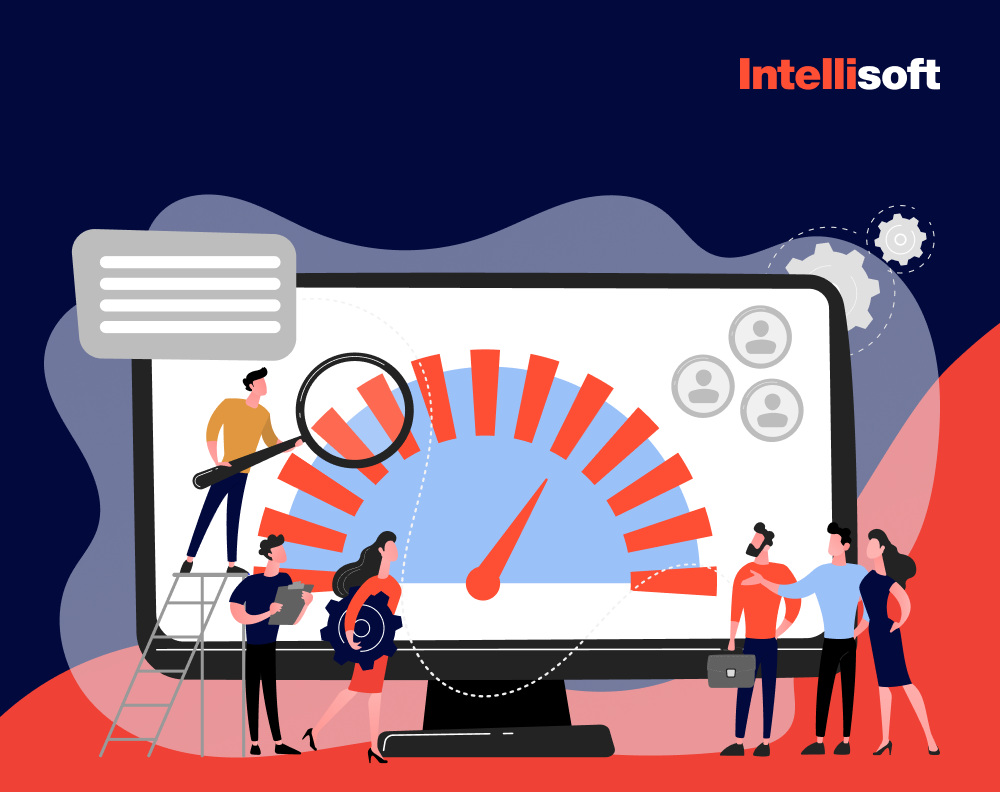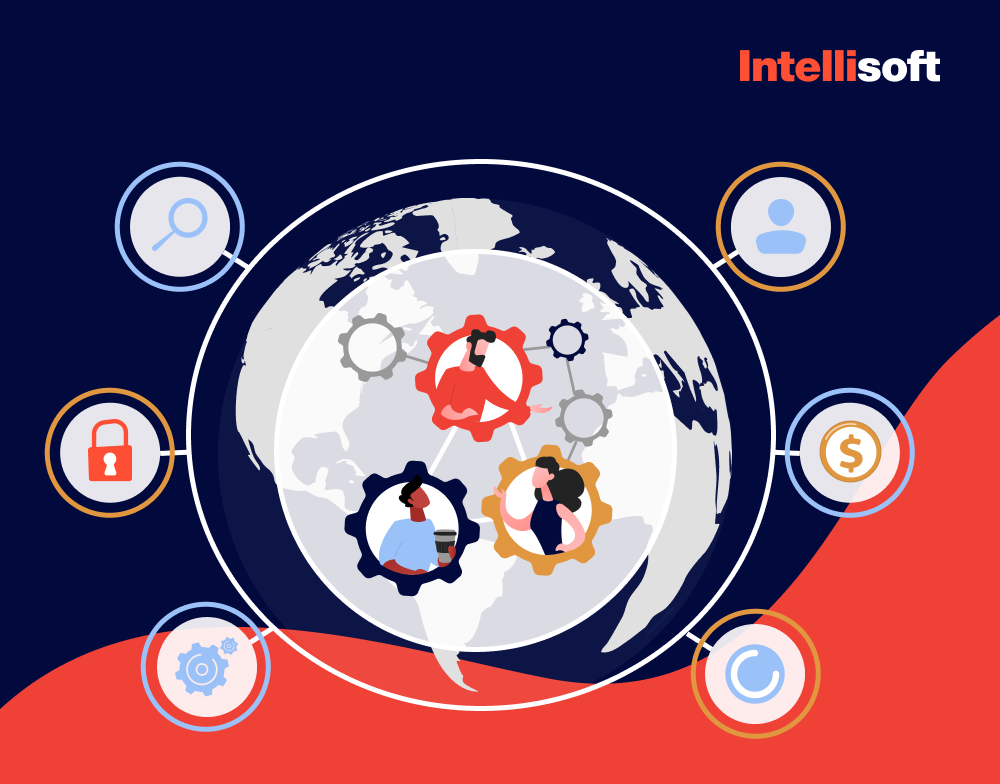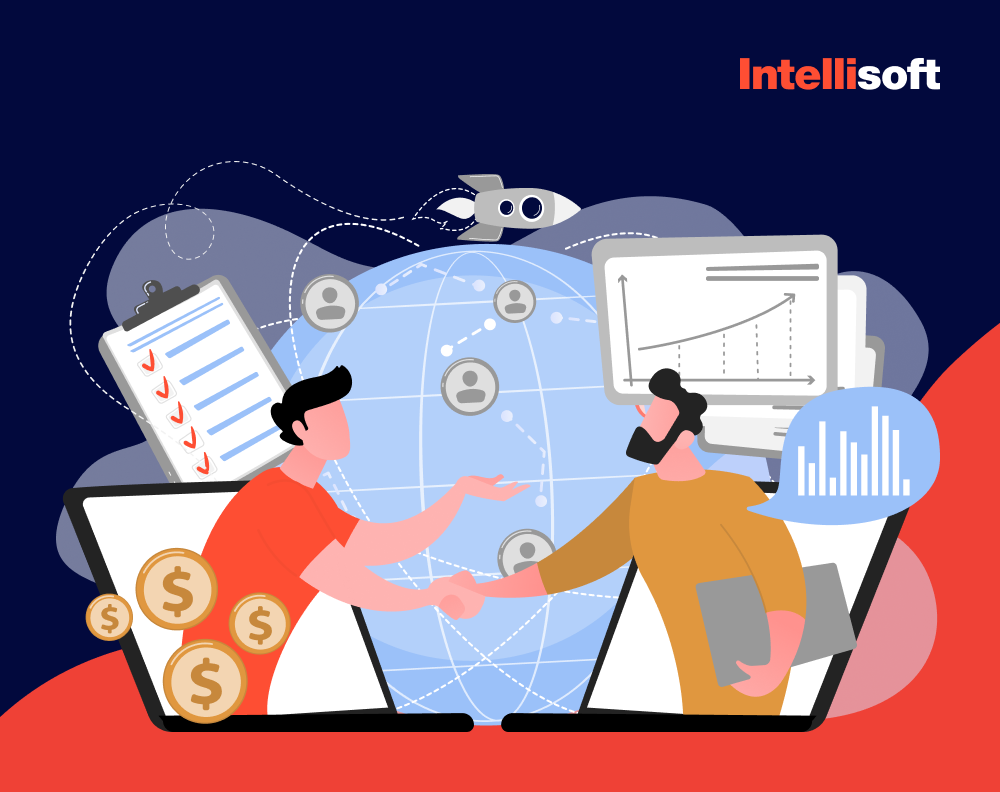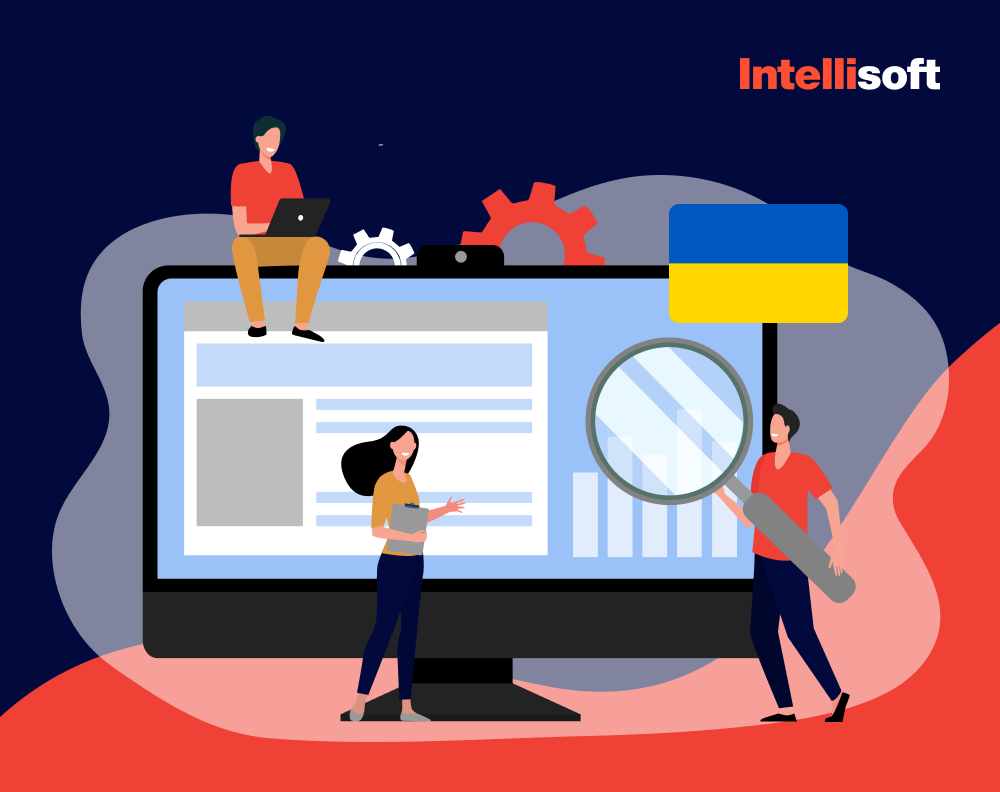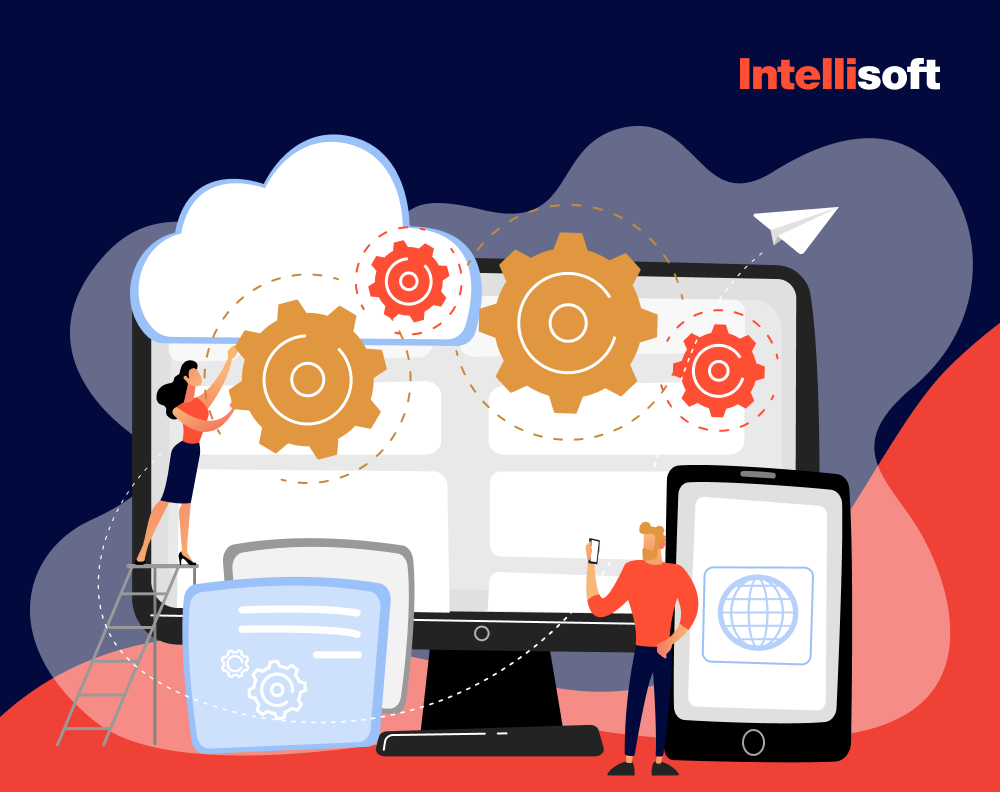As a business owner involved in the digital world of IT services and outsourcing, you have probably stumbled upon these three words: Service Level Agreements (SLAs). Everyone has herb about them, but a small percentage of people know what lies behind these words. In fact, SLAs are the guiding principles that ensure a seamless and fruitful partnership between clients and service providers.
If you have decided to outsource your business processes, you might wonder what is an SLA in tech and why it is important to create an SLA. Well, as organizations increasingly leverage the expertise of external partners to meet their software development needs, comprehending the nuances of SLAs becomes paramount. It’s not merely a contractual formality; rather, SLAs lay the groundwork for performance expectations, quality benchmarks, and risk mitigation strategies. Thus, a lack of service level agreements can lead to serious disruptions and issues. In other words, an SLA will safeguard both parties to the contract.
At IntelliSoft, SLA is not a new concept to us; throughout the 15 years of our experience as outsourcing partners, we have created and maintained dozens of SLAs, helping clients navigate the complexities of SLAs. Embark on this journey with us, learn what is a Service Level Agreements, what does SLA stand for in business, and gain the knowledge to strategically utilize SLAs, ensuring your projects sail smoothly in the vast seas of the digital landscape.
Table of Contents
What is a Service Level Agreements in Software Outsourcing?
As a business owner, you might have wondered what is a service level agreement and why it matters so much. IT Service Level Agreements (SLAs) are contracts between clients and service providers, such as development partners. In the context of outsourcing, particularly in software development partnerships, SLAs are comprehensive documents that outline the specific terms, conditions, and expectations related to the quality of service to be delivered. These agreements go beyond mere project specifications and deadlines, delving into the intricacies of performance metrics, response times, and overall service standards.
In other words, what does SLA stand for in business? SLAs 2023 help you measure the quality of services and establish a clear and solid relationship built on trust. When creating an SLA, you should choose specific metrics, but how do you do that? Here are the tips to help you create a document beneficial both for you and your service provider:
- When selecting metrics, it’s important to pause and reflect on their significance from the perspective of the other party. Consistently bear in mind the question; how does this specific metric actively contribute to the ultimate outcome? Is it genuinely aligned with the intended purpose?
- Even when opting for the most experienced contractor, it’s crucial to ensure that the requirements and metrics outlined in the IT Service Level Agreement (SLA) align with the capabilities and resources of the team.
- Avoiding ambiguous metrics is imperative; in the event of complications, vague metrics can exacerbate the situation. The primary objective of a Service Level Agreements for IT is to establish a shared understanding, requiring all metrics to be easily collectible. This ensures that everyone involved is on the same page and facilitates smoother collaboration.
Why IT Service Level Agreements Matter in Software Outsourcing
SLAs are essential in outsourcing and can be considered the building blocks of effective and secure relationships between clients and development partners. Service providers need SLAs as they help them manage client expectations and establish clear guidelines regarding the severity levels and conditions under which they bear no responsibility for outages or performance issues.
Clients also require a Service Level Agreements for IT. These agreements outline the requirements for the provider’s performance and can be used to compare multiple vendors. Thus, an SLA Service Level Agreement tells a client what to expect from the cooperation and what results they can achieve when working with a particular vendor.
Let’s take a closer look at what is a service level agreement and why SLAs 2023 matter so much in outsourcing:
Ensuring clear expectations
SLAs play a pivotal role in outlining and clarifying the expectations between clients and service providers. By explicitly defining the scope, quality standards, and specific deliverables, SLAs help mitigate misunderstandings and ensure that both parties share a common understanding of the project’s objectives. This clarity is fundamental to the success of any outsourcing arrangement.
Establishing accountability and responsibility
One of the primary functions of a Service Level Agreements for IT is to establish a framework of accountability and responsibility. These agreements delineate the roles and obligations of each party, setting clear expectations for performance metrics, deadlines, and service levels. This not only fosters a sense of commitment, but also provides a basis for holding each party answerable for their respective contributions to the outsourcing partnership.
Enhancing communication and transparency
SLAs 2023 serve as effective tools for enhancing communication and transparency in outsourcing relationships. By clearly articulating the metrics and communication channels, these agreements facilitate open dialogue between clients and service providers. This transparency is crucial for maintaining trust, as it ensures that both parties are aware of each other’s progress, challenges, and successes throughout the duration of the outsourcing engagement.
Mitigating risks and conflicts
In the complex landscape of outsourcing, risks and conflicts are inherent challenges. SLAs act as preventive measures by identifying potential risks and specifying protocols for conflict resolution. By addressing these aspects proactively, SLAs contribute to risk mitigation and provide a structured framework for resolving disputes, ultimately fostering a more stable and resilient outsourcing partnership.
Who Needs IT Service Level Agreements?
Various parties in the business world benefit from having SLAs to ensure clarity, accountability, and quality of service. Let’s explore what is an SLA in tech and what businesses benefit from it the most:
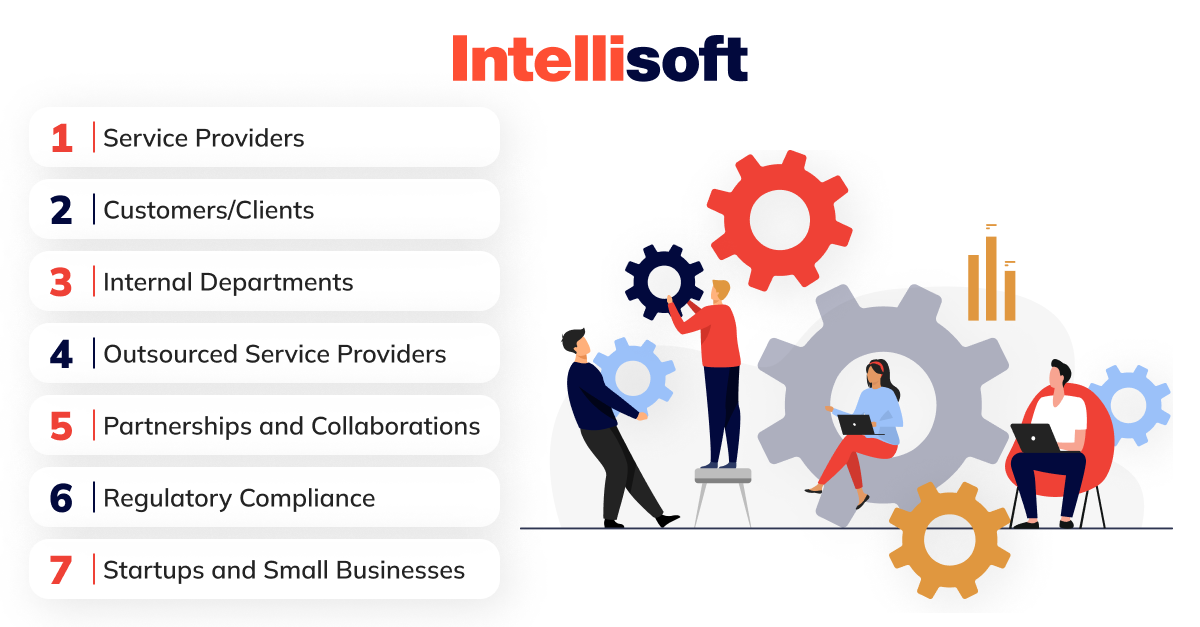
- Service Providers. Companies or individuals offering services to clients or customers, such as IT services, cloud computing, telecommunications, and more, often use SLAs to define the terms of their service commitments.
- Customers/Clients. Organizations or individuals receiving services want assurance about the quality, availability, and performance of the services they are paying for. An SLA helps in setting expectations and holding the service provider accountable.
- Internal Departments. In larger organizations, different departments or teams may have service-level agreements with each other. For example, the IT department might have an SLA Service Level Agreement with the marketing department regarding the performance of certain systems.
- Outsourced Service Providers. When a company outsources certain functions to third-party service providers, having SLAs in place is crucial to ensure that the outsourcing partner meets the agreed-upon service standards.
- Partnerships and Collaborations. Organizations entering into partnerships or collaborations may establish SLAs to define the terms of cooperation and the levels of support each party should provide to the other.
- Regulatory Compliance. In some industries, regulatory bodies may require companies to have SLAs in place to ensure compliance with standards and regulations. This is particularly common in sectors such as healthcare, finance, and telecommunications.
- Startups and Small Businesses. Even small businesses and startups can benefit from SLAs, especially if they rely on external services for critical business functions. It helps to ensure stability, reliability, and performance.
Related Readings
- Nearshoring. What is it and for Who?
- What is Staff Augmentation? A Model to Extend Your Team
- Outsourcing vs. Outstaffing Models: What Is the Difference and Their Pros & Cons
- Everything You Need to Know About Team Extension and Dedicated Team Models
- 10 Best Countries for Hiring a Dedicated Development Team
Types of SLA in Software Outsourcing
SLAs can take up different formats and be tailored to specific business needs and requirements based on the industries and service providers. Let’s take a look at the main types of SLA:

Customer-Based SLAs
One of the first service level agreement types is customer-based SLAs. They focus on the specific needs and expectations of the client or customer. These agreements are tailored to address the unique requirements of individual clients, considering factors such as performance metrics, response times, and service quality that are important to the customer.
Key Features:
- Customization. The SLA is customized to align with the client’s specific business goals, priorities, and expectations.
- Client-Centric Metrics. Metrics and key performance indicators (KPIs) are defined based on what matters most to the customer, ensuring a client-centric approach.
Service-Based SLAs
Service-based SLAs center around the specific services provided by the outsourcing partner. Rather than focusing on individual clients, these agreements define the standards and benchmarks related to the delivery of specific services, irrespective of the client.
Key Features:
- Service-Specific Metrics. Metrics are established based on the nature of the service, such as software development, maintenance, or support.
- Consistency. The focus is on maintaining consistent service quality across all clients and projects.
Multi-Level SLAs
Next in the list of SLA types are multi-level SLAs. They involve different tiers or levels of service, each with its own set of commitments and metrics. This approach allows for a more granular and nuanced definition of service levels based on factors such as criticality, urgency, or complexity.
Key Features:
- Tiered Structure. SLA is structured with different levels, each catering to specific aspects or priority levels.
- Flexibility. Provides flexibility in adapting service levels based on the criticality of tasks or the importance of specific services.
Service-Provider SLAs
Service-provider SLAs outline the commitments and responsibilities of the outsourcing partner. These agreements focus on the internal processes, capabilities, and performance standards of the service provider.
Key Features:
- Internal Metrics. Metrics are defined to assess the efficiency, reliability, and quality of the service provider’s internal processes.
- Continuous Improvement. Includes provisions for continuous improvement initiatives within the service provider’s organization.
Customer-Provider Partnership SLAs
Customer-provider partnership SLAs go beyond a transactional relationship, emphasizing collaboration and mutual success. These agreements foster a long-term partnership approach, aligning the goals of both the client and the service provider.
Key Features:
- Shared Goals. SLA Service Level Agreement reflects shared business objectives and goals between the client and the service provider.
- Innovation and Collaboration. Encourages collaboration and innovation to achieve collective success.
Key SLA Components: What Should a Service Level Agreement Include
Here are the key SLA components and, what should a service level agreement include:
Agreement Overview
- Purpose: Clearly state the reason for the SLA and its overall goals.
- Scope: Define the boundaries of the agreement by specifying what services are covered.
- Duration: Clearly mention the start and end dates of the SLA.
Description of Services
- Services Provided: Detail the specific services or products that the service provider will deliver.
- Quality Standards: Define the expected quality levels and standards for each service.
Exclusions
- Limitations: Clearly outline any services, situations, or conditions that are not covered by the SLA.
Service Performance
- Metrics and KPIs: Define measurable performance metrics and key performance indicators.
- Targets: Specify the performance targets or acceptable levels for each metric.
Redressing
- Penalties and Remedies: Outline the consequences for service failures or breaches.
- Compensation: Define any compensation or penalty mechanisms for not meeting agreed-upon standards.
Stakeholders
- Roles and Responsibilities: Clearly define the roles and responsibilities of both the service provider and the customer.
- Communication Channels: Identify the main contacts and communication channels for issue resolution.
Security
- Data Security: Detail the measures in place to ensure the security and confidentiality of data.
- Compliance: Ensure that the services provided comply with relevant security and privacy regulations.
Risk Management and Disaster Recovery
- Risk Mitigation: Identify potential risks and outline strategies for risk mitigation.
- Disaster Recovery: Define the disaster recovery and business continuity plans.
Service Tracking and Reporting
- Monitoring: Describe how the services will be monitored and tracked.
- Reporting: Specify the frequency and format of performance reports.
Periodic Review and Change Processes
- Review Schedule: Outline how often the SLA will be reviewed and evaluated.
- Change Management: Define the process for making changes to the SLA.
Termination Process
- Termination Conditions: Clearly state the conditions under which either party can terminate the agreement.
- Notice Period: Specify the required notice period for termination.
Signatures
- Authorized Signatures: Include spaces for authorized representatives of both parties to sign and date the agreement.
How to Create an Effective IT Service Level Agreement
What is an SLA in tech and how to ensure that it’s effective? Creating Service Level Agreements (SLAs) and ensuring that they are effective and detailed requires attention and careful planning. You need to be aware of all the steps you need to take and clearly define your goals, ensuring that they are measurable and achievable.
Let’s take a look at the steps you need to take to develop an effective SLA:
- Involving stakeholders in SLA development
First of all, you need to involve all relevant stakeholders in the development process, including internal teams and external partners or clients. By involving all stakeholders, you will incorporate diverse perspectives and ensure that the SLA reflects the needs and expectations of all parties involved. This collaborative approach fosters a sense of ownership and commitment to the agreed-upon service standards. - Defining measurable and achievable goals
A cornerstone of effective SLAs is the clarity and specificity of goals. Each objective outlined in the SLA should be measurable and achievable. This means using quantifiable metrics and realistic targets. Whether it’s response times, resolution rates, or other key performance indicators, defining these goals with precision allows for accurate monitoring and assessment of service delivery. - Addressing potential challenges and contingencies
A comprehensive SLA anticipates potential challenges and includes contingency plans for addressing them. This involves identifying possible obstacles that may affect service delivery and establishing protocols to mitigate these issues. Whether it’s technical failures, unexpected surges in demand, or other disruptions, having a well-thought-out contingency plan helps maintain service levels during challenging situations. - Incorporating flexibility for evolving project needs
Projects and business environments are dynamic, and an effective SLA should be adaptable to evolving needs. Build flexibility into the SLA framework to accommodate changes in project scope, technology advancements, or shifts in business priorities. This adaptability ensures that the SLA remains relevant and continues to contribute to the overall success of the service delivery, even as circumstances evolve.
Monitoring and Measuring SLA Performance
Once you create an SLA, you need to control whether both parties adhere to the rules and regulations and meet their commitments. Thus, you should constantly monitor your SLA’s performance. To do this efficiently, you can follow the following steps:

Establishing key performance indicators (KPIs)
The initial step to SLA performance monitoring is establishing KPIs. These metrics can include response times, resolution rates, uptime percentage, and any other measurable criteria relevant to the service being provided. Once you establish clear and well-defined KPIs, they will serve as a basis for objective evaluation and enable both parties to assess performance against predetermined benchmarks.
Regular performance reviews and reporting
Regular performance reviews are crucial for assessing the ongoing adherence to the SLA and identifying areas for improvement. Schedule periodic reviews to analyze performance data, compare it against established KPIs, and identify trends or patterns. Generate comprehensive performance reports that highlight achievements, areas of concern, and any deviations from the agreed-upon standards. These reviews not only facilitate accountability, but also serve as a basis for open communication between the parties involved.
Implementing feedback loops for continuous improvement
To foster continuous improvement, implement feedback loops within the SLA monitoring process. Encourage both parties to provide feedback on the performance and effectiveness of the SLA. This feedback can come in the form of suggestions for improvement, insights into challenges faced, or recommendations for optimizing service delivery. By actively seeking and incorporating feedback, you create a dynamic SLA framework that adapts to evolving needs, ensuring sustained effectiveness over time.
Wrapping Up
Doing business effectively in the modern world is impossible without Service Level Agreements as they are the cornerstone of any cooperation with vendors and development partners. SLAs help business owners define, measure, and manage service quality and performance, ensure that communication with the vendors is clear and honest, and establish accountability.
The creation of an IT Service Level Agreement should always be built on trust, open communication, mutual understanding, and focus on mutually beneficial outcomes. Thus, make sure that your outsourcing development partner shares your vision and goals and is ready to take on responsibility. The SLA you create should include service descriptions, responsibilities of both parties, performance metrics, and penalties or rewards for meeting or failing certain goals.
As you embark on this journey with the knowledge about what is a service level agreement, we can accompany you. Our commitment to excellence, expertise in development, and proven track record make us a reliable partner for establishing and maintaining successful service-level agreements. Contact us today to explore what does SLA stand for in business and how we can contribute to the success of your business through effective collaboration and meticulous SLA development.


